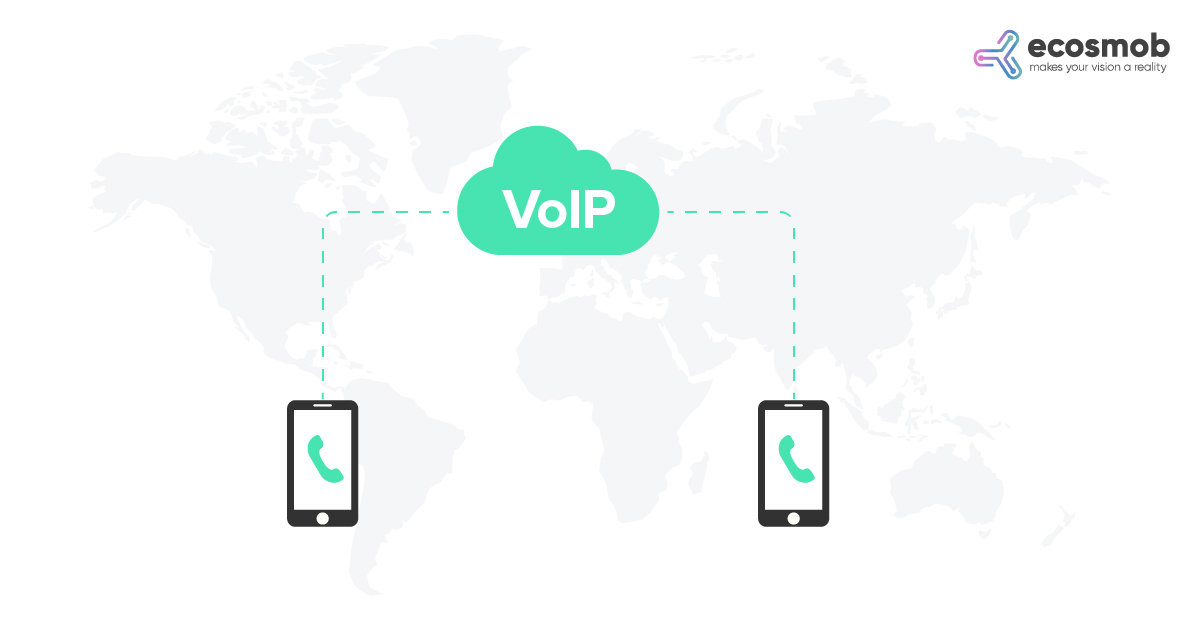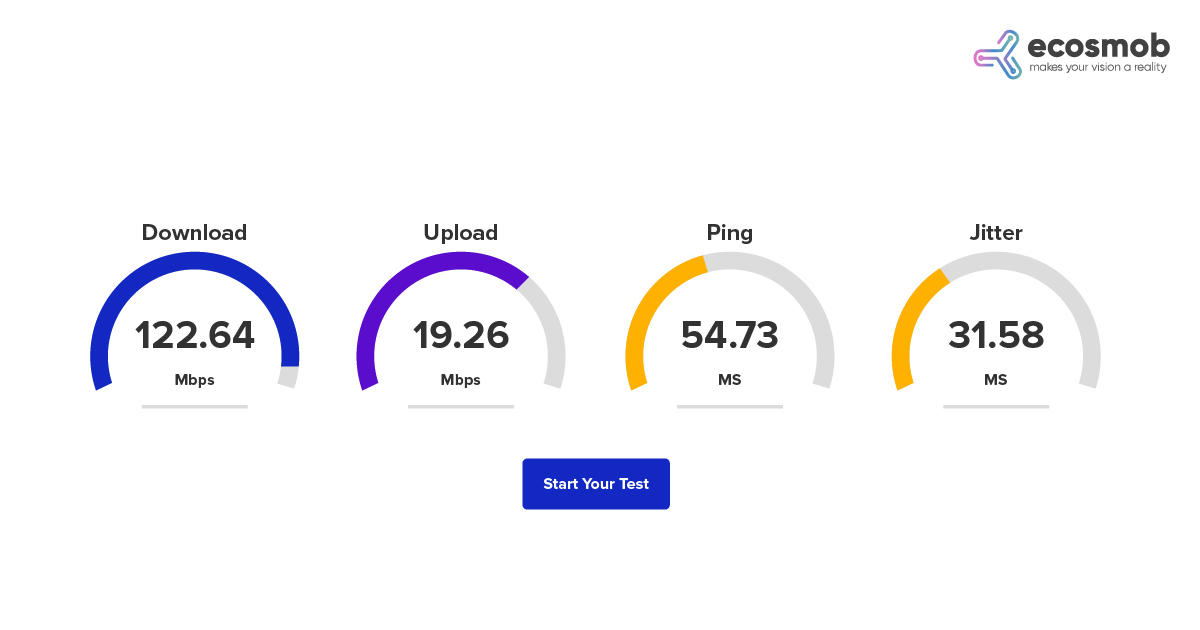Across every network; there are Jitters. They can sometimes be invisible. You need to take action, though, if they’re negatively affecting your ability to use the internet. Disruptions like choppy audio and delayed or dropped calls might cause intolerable degrees. It would be best to have a good grasp of some key concepts for a Jitter test. In this blog post, we’ll look at some crucial pointers that will assist you in identifying the issue’s source: What is Jitter in VoIP, VoIP test, and how to fix it to make high-quality calls.
What Is VoIP Jitter?
VoIP Jitter, known as latency, describes irregularities in the time for voice data packets to arrive at their receiver. Voice transmissions divide during a VoIP connection into tiny data packets that travel across the internet before being put back together at their destination. High Jitter can result in packet delays, packet loss, and packets arriving in the wrong order, even though this often occurs in real time. Your audio may come off as choppy, delayed, or distorted; in extreme circumstances, it may even completely ruin your phone call.
Jitter resembles a traffic gridlock a lot. Voice packets often travel their routes without incident, but unanticipated problems with your network or hardware may cause them to be delayed or diverted. Yet, unlike actual traffic, VoIP Jitter may be identified and fixed from the convenience of your office.
 What Causes VoIP Calls to Jitter?
What Causes VoIP Calls to Jitter?
Several factors cause VoIP calls to experience Jitter.
Network Congestion:
When network nodes overburden with data, network congestion slows down data transit. This traffic may also cause Jitter in VoIP calls. It might cause congestion and jittering on your VoIP calls if your network is simultaneously being used for numerous tasks, such as downloading or streaming huge files.
Inadequate Network Connection
VoIP Jitter most frequently happens when using a shaky or unstable wireless network connection. If you’re connecting to the internet at a hotel, the airport, or even your neighborhood coffee shop. It is probably the cause of your Jitter issues because public WiFi is notoriously unpredictable.
Also, while your office’s WiFi may be robust and provide excellent sound quality on a typical day, unforeseen network problems may still interfere with VoIP calls. A wired internet connection is impressive if you use your business VoIP service to make crucial calls from your computer throughout the day. However, being close to a router or modem can be beneficial when using WiFi.
Are You Experiencing Poor Call Quality on Your VoIP System?
Poor Network Configuration
Your hardware or software must be configured appropriately. You will notice a decline in connection performance if the connection is initially flawed. So, if using a wired connection, you should always keep your router’s firmware updated and repair any damaged Ethernet cables.
Hardware Problems
As routers and modems are the only gear VoIP users require, you can be sure they are to blame for your VoIP Jitter. Taking care of your possessions is crucial because obsolete, filthy, or damaged hardware can develop problems. If you connect through Ethernet, broken cables may contribute to hardware-related Jitter problems.
Also Read: VoIP Testing For Your Business: An Effective Guide to Get Started
How to Fix VoIP Jitter Issues?
Once you’ve proven that VoIP Jitter is the primary cause of your call quality difficulties, you can move on with finding a fix. You can find the source of your Jitter and eliminate it by taking one or all of the following actions.
If you haven’t previously, take a moment to reset your network hardware before going through this list. In many instances, turning it on and off again fixes the problem, at least temporarily.
You can try the options listed below if it doesn’t solve your VoIP Jitter problems or if your Jitter troubles come back.
Choose a Wired Connection for your Network
Even though WiFi may be practical, VoIP callers have more dependable internet connections. When working from home or the office, using Ethernet connections to connect to the internet will strengthen your network connection. You can also upgrade any current wiring to Category 6 cabling to rule out faulty hardware as the source of the Jitter.
Upgrade your Internet Connection
You should update your internet service plan to deliver faster upload and download speeds if you consistently experience VoIP Jitter. Doing this allows you to accommodate additional VoIP users and devices without worrying about running out of bandwidth or experiencing Jitter. You can consider contacting your internet service provider or switching providers if your speed test’s upload and download speeds don’t match what you’re paying for.
Use a Jitter Buffer
As voice data packets arrive, they temporarily store in a Jitter buffer. To guarantee that audio is delivered flawlessly every time, it slightly delays audio, so incoming data packets can be reordered or pieced back together, even if packet delays happen. As a result, you might not even notice a word or two missing here and there. The fact is that Jitter buffers are only a temporary cure for the VoIP Jitter that interferes with your calls. Yet, while focusing on a more long-term fix, VoIP Jitter buffers can help you communicate with clients successfully.
Enable Quality of Service (QoS)
Refers to a group of technologies regulating general network performance. You can adjust the quality of service Settings to prioritize VoIP packets, enabling VoIP conversations to move through queues quickly. Yeah, even if you’re trying to download 10 enormous video files while working in an office with a colleague. You can prevent voice packets from being delayed by using packet prioritizing settings. Bear in mind that some routers do not provide packet prioritization. You continue to utilize other quality service technologies even if your router is in this situation.
How to Do the VoIP Jitter Test?
When your call quality declines and choppiness occurs, Jitter may be the typical culprit, but you will know once you do a VoIP Jitter test. On the other hand, you could experience Jitter without being aware of it. Knowing your Jitter measurements might help you decide whether to develop new ways to improve your network, even though Jitter is fine if your phone conversations are going well.
For doing a VoIP test for a phone, there are some significant steps that you can perform.
Choose a Reliable Jitter Testing Tool
Many online tools are for VoIP Jitter testing. Some popular tools include PingPlotter, Wireshark, and Jitter Analyzer. You can select anyone according to your experiences.
Set up your VoIP Call
Call another user or a test number. Using a live VoIP call for this test is essential, as VoIP Jitter experiences during live calls, not simulated ones.
Start the Jitter Test
You can start Jitter testing once your call establishes. The tool will measure the delay or variation in the packets sent and received during the call.
Analyze the Results
The VoIP Jitter test results will typically show you the maximum and average Jitter experienced during the call. If the Jitter is high, it can cause issues such as choppy audio, dropped calls, or delays in conversation. Generally, a Jitter value of less than 30 ms is considered acceptable.
Also Read: VoIP Quality Testing – All You Need to Know
Take Action
If the Jitter values are too high, you may need to improve your network infrastructure or choose a different VoIP service provider with better network quality.
 It is essential to note that various factors, such as network congestion, poor-quality routers, and distance between the endpoints, can cause VoIP Jitter. Therefore, it recommends performing VoIP Jitter tests periodically to ensure VoIP quality calls.
It is essential to note that various factors, such as network congestion, poor-quality routers, and distance between the endpoints, can cause VoIP Jitter. Therefore, it recommends performing VoIP Jitter tests periodically to ensure VoIP quality calls.
The Bottom Line
VoIP Jitter can be a frustrating issue that can impact the quality of your VoIP calls. However, by understanding the common causes of Jitter and implementing the best solutions, you can ensure that your VoIP calls are precise and reliable.















